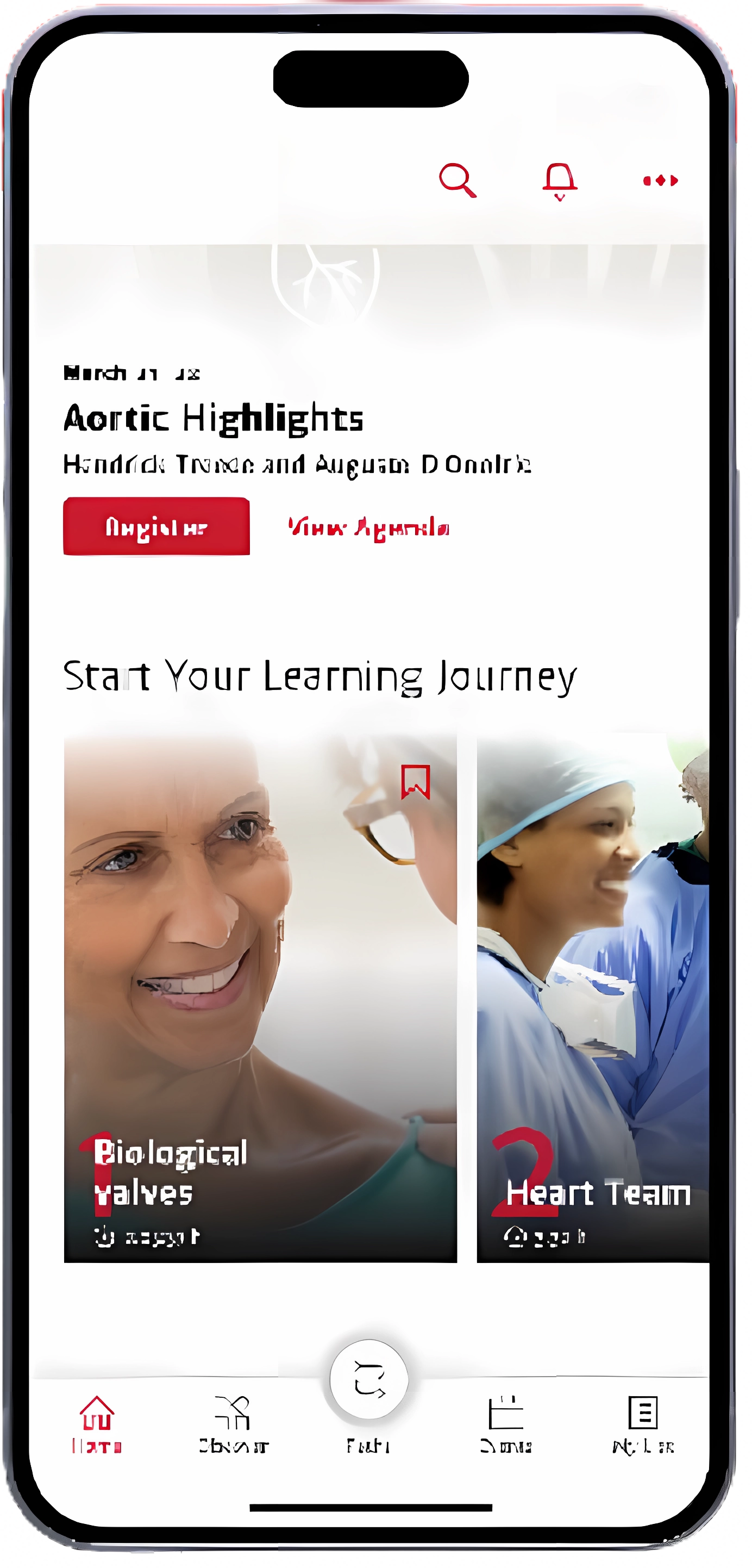TAVI flashback on a decade
Dr. Stepan Cerny, Czech Republic
Dr. Nikolaos Bonaros, Austria
Dr. Mark R. Helmers, USA
Dr. Paolo Berretta, Italy
Dr. Torsten Christ, Germany
Dr. Bart Meuris, Belgium
Jean-Louis Vanoverschelde, Belgium
Can Gollmann-Tepeköylü, Austria
Dr. Martin Andreas
Dr. Marco Di Eusanio
Keywords: minimally invasive; mitral valve repair; mitral valve replacement
One benefit of minimally invasive cardiac surgery compared with conventional sternotomy is faster recovery after surgery, which results in shorter lengths of stay in hospital for patients. However, there are concerns over longer operative times, complication rates and durability of repair. The use of minimally invasive techniques for mitral valve repair is increasing but it is not currently clear whether the benefits of this approach over conventional sternotomy outweigh the disadvantages.
This article presents the largest meta-analysis, to date, comparing early and late outcomes of mitral valve repair via minimally invasive surgery versus a conventional sternotomy approach. Sá et al. assessed a broad range of outcomes, including operative times, mortality, complications and hospital stay.
Download below to discover the latest findings in mitral valve repair.
Click here to access the full publication
Edwards, Edwards Lifesciences, the stylized E logo, are trademarks or service marks of Edwards Lifesciences Corporation or its affiliates. All other trademarks are the property of their respective owners.
© 2020 Edwards Lifesciences Corporation. All rights reserved.
Edwards Lifesciences • Route de l’Etraz 70, 1260 Nyon, Switzerland • edwards.com
Keywords: aortic stenosis; aortic valve replacement; bundle branch block; conduction disturbances
Rapid-deployment aortic valve replacement (RD-AVR) may cause conduction disturbances in the heart and lead to permanent pacemaker implantation.
This real-world, prospective study presents data from 700 consecutive patients, who underwent RD-AVR with an EDWARDS INTUITY valve. Coti et al. analysed postoperative, 3-month and 1-, 3- and 5-year follow-up data to assess the incidence of new conduction disturbances and pacemaker implantation rates. The authors also identified preoperative predictors for new pacemaker requirement. This study highlights how inclusion criteria and concomitant interventions can affect cardiac conductions after RD-AVR.
Download the summary below to find out more about conduction disturbances following RD-AVR.
Click here to access the full publication
Important safety information:
Use of the EDWARDS INTUITY Elite valve system may be associated with new or worsened conduction disturbances, which may require a permanent cardiac pacemaker implant (PPI). The rate of PPI for the EDWARDS INTUITY Elite valve is within the range reported in the literature for various rapid deployment valves, but higher than that reported for surgical aortic valves. Physicians should assess the benefits and risks of the EDWARDS INTUITY Elite valve prior to implantation. See instructions for use for additional information.
For professional use. For a listing of indications, contraindications, precautions, warnings, and potential adverse events, please refer to the Instructions for Use (consult eifu.edwards.com where applicable).
Edwards devices placed on the European market meeting the essential requirements referred to in Article 3 of the Medical Device Directive 93/42/EEC bear the CE marking of conformity.
Edwards, Edwards Lifesciences, the stylized E logo, Carpentier-Edwards, EDWARDS INTUITY, and EDWARDS INTUITY Elite are trademarks or service marks of Edwards Lifesciences Corporation or its affiliates. All other trademarks are the property of their respective owners.
© 2020 Edwards Lifesciences Corporation. All rights reserved.
Edwards Lifesciences • Route de l’Etraz 70, 1260 Nyon, Switzerland • edwards.com
Keywords: aortic root replacement; aortic stenosis; aortic valve replacement; Bentall; Valsalva graft
Although the majority of Bentall procedures have been performed with mechanical valves, the use of bioprosthetic valves is increasing. Modifications to the Bentall procedure may further enable the use of bioprosthetic valves: use of Valsalva pseudosinuses may reduce stress on the bioprosthetic leaflets and reduce the incidence of thromboembolism.
Chirichilli et al. routinely perform the Bentall procedure using the Valsalva graft with a Carpentier‑Edwards PERIMOUNT or PERIMOUNT Magna Ease valve. Here, they present the long‑term follow-up data assessing durability and valve-related complications.
Click on the link below to find out more about the performance of the PERIMOUNT valves combined with a modified Bentall procedure.
Click here to access the full publication
For professional use. For a listing of indications, contraindications, precautions, warnings, and potential adverse events, please refer to the Instructions for Use (consult eifu.edwards.com where applicable).
Edwards devices placed on the European market meeting the essential requirements referred to in Article 3 of the Medical Device Directive 93/42/EEC bear the CE marking of conformity.
Edwards, Edwards Lifesciences, the stylized E logo, Carpentier-Edwards, Magna, Magna Ease, PERI, PERIMOUNT and PERIMOUNT Magna are trademarks or service marks of Edwards Lifesciences Corporation or its affiliates. All other trademarks are the property of their respective owners.
© 2020 Edwards Lifesciences Corporation. All rights reserved.
Edwards Lifesciences • Route de l’Etraz 70, 1260 Nyon, Switzerland • edwards.com
Keywords: aortic bioprostheses; aortic stenosis; aortic valve replacement
Surgical aortic valve replacement (SAVR) is still offered to elderly populations despite the potential for structural valve degeneration. Currently, however, there is limited comparative data on the long-term durability of different SAVR prostheses.
Reporting outcomes including repeat aortic valve replacement, prosthetic valve endocarditis and late all-cause mortality, Biancari et al. present key results from a retrospective, non-randomised, propensity-matched comparative analysis of the Trifecta and Carpentier-Edwards PERIMOUNT Magna Ease valves. The authors compared the outcomes of 2,216 patients who had undergone the procedure to implant one of the two SAVR prostheses.
Click the link below for an update on the latest research in aortic valve replacement.
Click here to access the full publication
For professional use. For a listing of indications, contraindications, precautions, warnings, and potential adverse events, please refer to the Instructions for Use (consult eifu.edwards.com where applicable).
Edwards devices placed on the European market meeting the essential requirements referred to in Article 3 of the Medical Device Directive 93/42/EEC bear the CE marking of conformity.
Edwards, Edwards Lifesciences, the stylized E logo, Carpentier-Edwards, Magna, Magna Ease, PERI, PERIMOUNT and PERIMOUNT Magna are trademarks of Edwards Lifesciences Corporation or its affiliates. All other trademarks or service marks are the property of their respective owners.
Keywords: aortic valve replacement; pericardial bioprostheses; reintervention
The use of pericardial bioprostheses in aortic valve replacement (AVR) is highly popular due to the lack of need for lifelong anticoagulation. Despite this, few studies have investigated the durability, rates of structural valve degeneration and valve-related events in newer bioprostheses.
In this article Lam et al. present key results from a single-centre, retrospective study comparing three different aortic bioprosthetic valves . The authors assessed rates and causes of reinterventions in patients who underwent AVR with the Trifecta, Mitroflow and Carpentier-Edwards PERIMOUNT Magna Ease valves.
Follow the link below for the latest research in aortic valve replacement.
Click here to access the full publication
For professional use. For a listing of indications, contraindications, precautions, warnings, and potential adverse events, please refer to the Instructions for Use (consult eifu.edwards.com where applicable).
Edwards devices placed on the European market meeting the essential requirements referred to in Article 3 of the Medical Device Directive 93/42/EEC bear the CE marking of conformity.
Edwards, Edwards Lifesciences, the stylized E logo, Carpentier-Edwards, Magna, Magna Ease, PERI, PERIMOUNT, and PERIMOUNT Magna are trademarks or service marks of Edwards Lifesciences Corporation or its affiliates. All other trademarks are the property of their respective owners.





